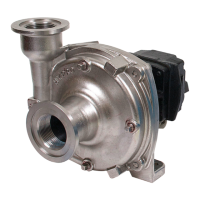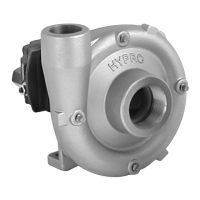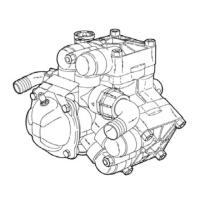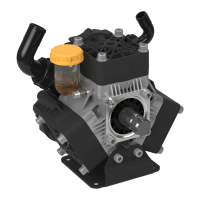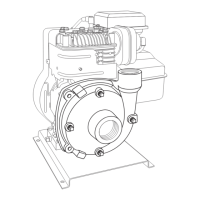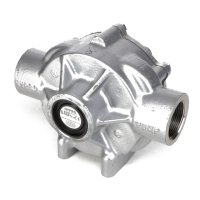-3-
Hydraulic Pumps
Hydraulic pumps come in two basic types:
• Constant displacement - which will continue to put
out its rated flow regardless of pressure, until the re-
lief valve bypasses the flow.
• Variable displacement - which will produce only the
flow needed by the implement until the total pump
output is reached. If less than the full pump output
is required, an automatic stroke control mechanism
decreases the pump output to maintain a constant
pressure and flow. The output varies according to
demand.
The Closed Center Valve (See Figure 2) is used with variable
displacement pumps. The flow is completely shut off in the
neutral position, causing the pump stroke to adjust to zero
flow. The flow stops, but the pump maintains a static pres-
sure up to the valve.
Spool Valves
There are two basic types of spool valves used in conjunction
with these pumps — Open and Closed Center. In the Open
Center Valve (See Figure 1), the flow goes straight through
the valve when in the neutral position. This type is used for
constant displacement pumps where the flow should never
be shut off.
Figure 1
Open Center
Spool Valve
In Neutral
Position
Hydraulic Motors
Figure 3 shows an internal gear motor (Gerotor) where pres-
sure causes the cavities between the gears to expand on one
side, developing torque. The Gerotor type of hydraulic motor
is used on Hypro pumps for its superior performance charac-
teristics, including cooler running and higher rpm capabilities.
Three Systems
Fitting these components together and installing a motor,
we have one of the three types of systems: Open Center,
Closed Center (pressure compensated) and Closed Center
Load Sensing (flow and pressure compensated).
Open Center Systems
In an Open Center System, the hydraulic pump puts out a
constant flow. If the pump puts out more oil than the mo-
tor can use, a portion of the oil must be bypassed around
the motor. When the oil is bypassed around a loop and does
no work, the energy put into it by the pump turns into heat.
Therefore, the amount of oil bypassed should be kept to a
minimum. Use the largest motor possible.
Closed Center (Pressure-Compensated) Systems
The Closed Center Pressure-Compensated system has a
variable displacement pump which will deliver flow at the
necessary rate to maintain a specified pressure. It is desir-
able to equip implements with a motor of a low flow range
that will cause the pump to operate between 1800 and 2100
psi [124 and 145 BAR]. A motor that requires a large vol-
ume to obtain the correct implement speed usually causes
the hydraulic pump in a closed center system to operate at
a lower pressure than desirable. This low pressure results in
unnecessary flow and the generation of heat that lowers the
lubricating quality of the oil and may damage transmission
parts. Use the smallest motor possible.
Closed Center Load Sensing Systems
(Flow and Pressure-Compensating)
The Closed Center Flow-Compensated System is a variation
of the pressure-compensated system, designed primarily for
more efficient operation and the generation of less heat. It
works on the principle of maintaining a constant pressure
drop from the pump to the work port of the selector valve. Any
variation in demand at the motor will cause a change in flow.
The system senses this change in flow due to the change
in pressure drop across the valve and causes the pump to
compensate by varying the pump flow. No restrictor is used
in the pressure line and no oil is bypassed.
Figure 3
Gerotor-Type
Hydraulic Motor
General Information—Hydraulic Systems
Figure 2
Closed Center
Spool Valve
In Neutral
Position
L-1526 (12/12, Rev. B)

